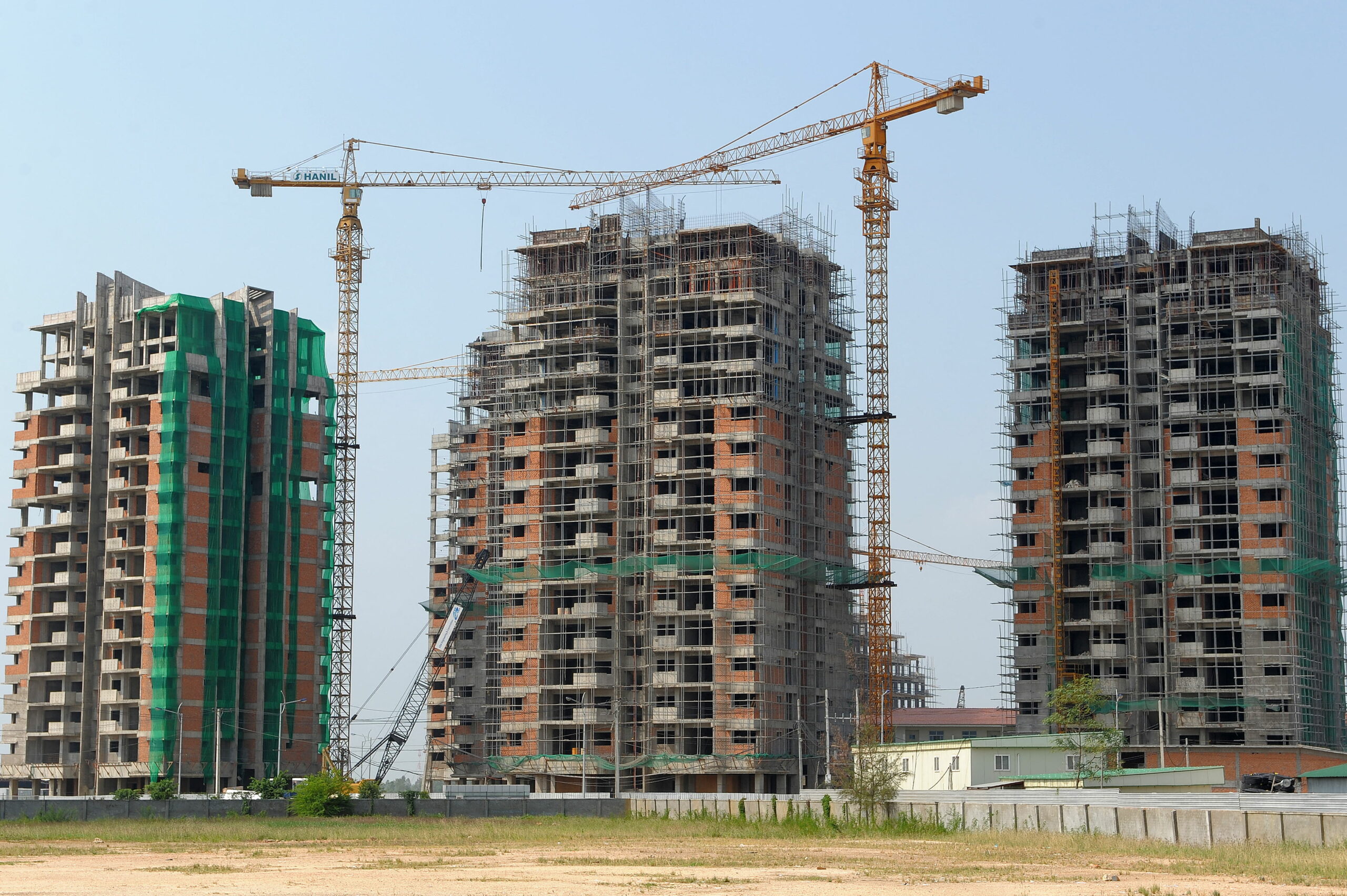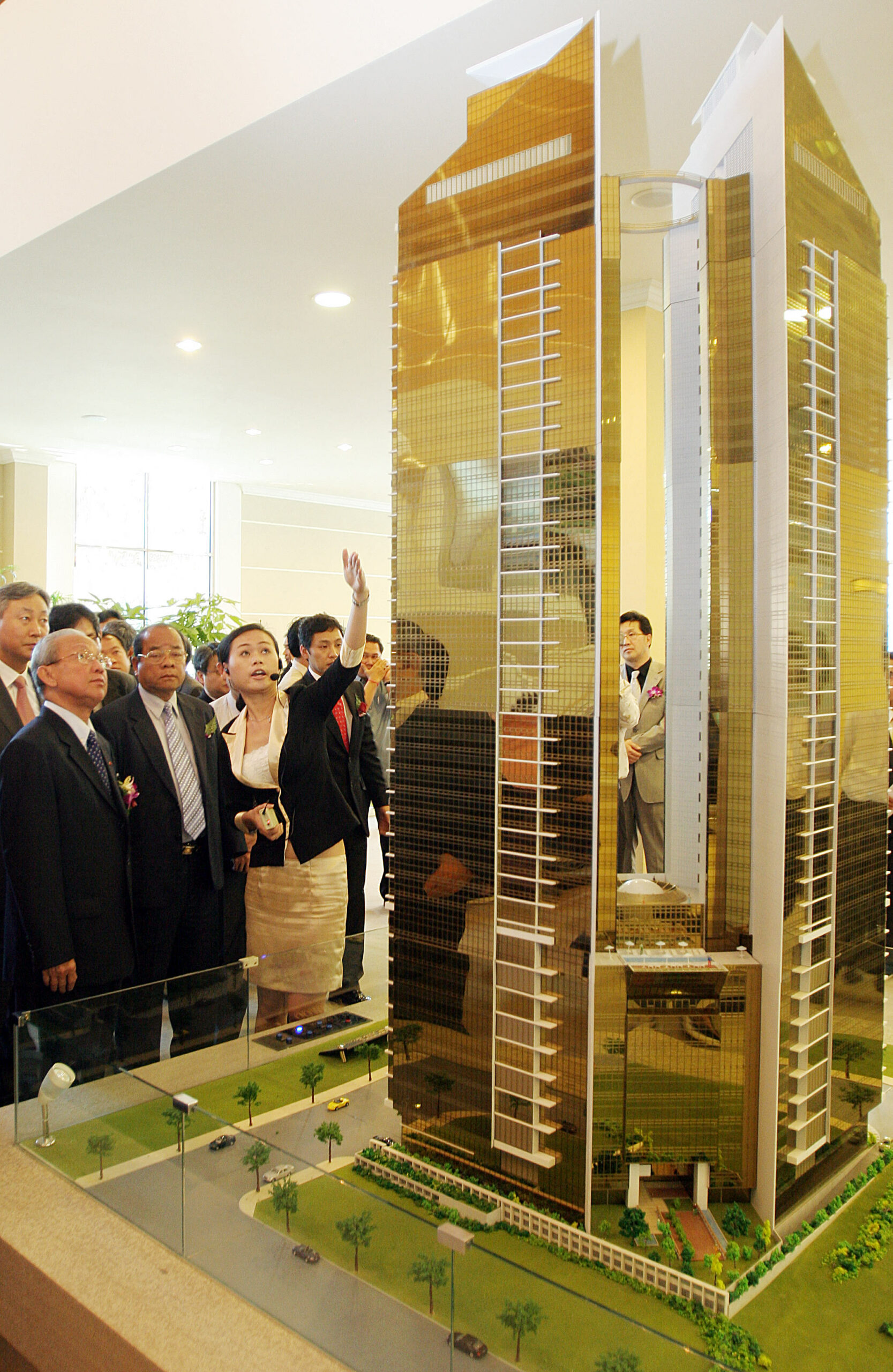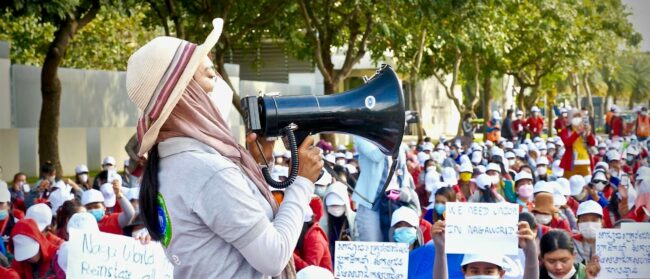Prospective homeowners in Cambodia may have breathed a sigh of relief when reports proclaimed housing prices fell by an average of 15% in the first quarter of 2021.
This ‘adjustment’ in price, as it was dubbed by optimistic real estate developers, was the first price reduction since the onset of an economic slowdown induced by the Covid-19 pandemic.
The significance of the shift, the first major property price fall since Cambodia recovered from the 2008 financial crisis, is not lost on Cambodians who have faced increasingly exorbitant home prices for years. The latest reversal has forced buyers to acknowledge the astounding prices at which units are sold and how easily developers can apply discounts and cut pricing to encourage sluggish sales momentum.
Yet despite a sharp fall in prices, the average price of the two most affordable categories, including apartments selling for $75,000 and linked houses priced at $90,000, are unaffordable.
A method to measure and define housing affordability in developing Asian countries was recently formulated by a group of researchers, who published their findings in the International Journal of Urban Sciences. The study included up to 27 developing countries and compared the average housing prices with the average annual household income of each country.
According to the socio-economic survey of 2019-2020 conducted by the National Institute of Statistics, the average annual income of a Cambodian household is $6,612, or $551 per month. Apartments, the least expensive housing option, have an average price of $75,000. Using the research group’s method, Cambodia has an average price-to-income ratio of 11.3 for its most affordable housing option.
Research on the region’s housing affordability indicates an affordable price-to-income ratio should be equal to or below 3, with anything above 5.1 considered severely unaffordable. Even with an ideal calculation using the least expensive housing option, Cambodia still scores more than two times what researchers consider to be severely unaffordable.
Cambodia is not alone in its housing unaffordability crisis. The average price-to-income ratio was extremely high, 12.5, for the 27 developing countries covered in the affordability study. Applying the same method to European countries, the average price-to-income ratio was significantly less.
Quick calculations and the study’s findings indicate current housing prices are severely out of reach for the average Cambodian household. No one factor is responsible.
The causes range from the most obvious, including actions by real estate developers and the construction industry, to the less understandable, such as housing gentrification fueled by foreign buyers, and obscure factors including government-mandated building regulations.

Contributing factors
The most common explanation hinges on a basic economic principle: the supply of desirable city land is limited and therefore expensive. Expensive land forces real estate developers to build high-earning units to recoup development expenses and turn a profit.
Furthermore, construction costs in Cambodia increase by an average of 10% due to the sector’s reliance on imported construction material, equipment and foreign expertise. A slight mark-up is necessary to preserve profits.
These constraining factors are commonly used to justify sky-high prices. Yet the explanation is not ironclad. For example, housing prices are high even in projects away from the city center. By exploiting cheaper land, these units should be significantly cheaper than city counterparts, but this is rarely the case.
To more astute observers, foreign home buyers are identified as the primary factor for high property prices. They have more purchasing power and are willing to pay more for property compared to locals, which disproportionately fuels price growth and soon outpaces local purchasing power.
Cambodia limits foreigners by only allowing legal acquisition of non-landed property, like condominiums. And yet legal alternatives and loopholes exist and are openly and meticulously discussed. As a result, foreigners still exert a disproportionate influence over the property markets, despite mitigation efforts.
Yet the true scale of the impact brought forward by foreign buyers can only be appreciated in conjunction with gentrification, a phenomenon often observed in neighborhoods with sudden investment, growth and development that changes the area’s original characteristics.

Although it can be a good sign, the fast-paced nature of gentrification also can result in the displacement of the original inhabitants due to increasing rent and living costs or pressure to sell the land for redevelopment.
If development happens in a locally driven, organic and well-planned manner, then it rarely falls prey to negative aspects. Development carried out at a comfortable pace and on a scale afforded by the community gives residents time to adjust and adapt. But if development is accelerated beyond the demand, means and scale of residents, the neighbourhood experiences negative gentrification.
Even on its own, gentrification has the power to push prices significantly higher. But when combined with the disproportionate influence of foreign buyers, the repercussions are heightened.
A vicious feedback loop in which foreign buyers initially price out previous residents and accelerate gentrification causes prices to climb out of reach for locals. Other foreign buyers acquire the properties at higher prices, driving additional gentrification and price inflation. Although foreign buyers alone are not the primary driving factor, their impact in the context of gentrification contributes to Cambodia’s bewildering property prices.
Building regulations
The passage of a law regulating buildings and construction in Cambodia, the 2015 sub-decree No. 42, was lauded for improving the safety, livability and standard of the Kingdom’s buildings. The policies enacted within the sub-decree are well-intended, however even honourable efforts can have unintended negative consequences.
The stated purpose of Article 32 is “the organization of land in an orderly and effective manner.” The article decreed that the minimum plot size for residential homes is 10×20 metres (32×65 feet) for detached residential homes such as villas and 4×15 metres (13×49 feet) for attached homes including shop houses and linked houses.
On the surface this seems like an inconsequential regulation designed to keep land plots uniform and easily organised into city blocks. Yet the brief article offers little flexibility.
By mandating a fixed minimum size for property plots, inhabitants who cannot afford plots meeting the strict minimum requirements are left without options. The regulation thereby unintentionally raises the entry bar significantly for those seeking to acquire a home.
Smaller plot sizes and correspondingly smaller homes, which would have otherwise been affordable to some, are illegal. Likewise, real estate developers are barred from developing more affordable options and will only consider much larger and more expensive options to avoid infringing on the law.
The inflexibility of Article 36 will push even more Cambodian households away from the option of buying or building a home, effectively legislating the exclusion of a whole demographic group from home ownership.
Cambodia’s unaffordable homes do not have a single cause. The contributing factors are multifaceted and interconnected, resulting from construction sector constraints, real estate developers’ economic prudence, the intertwining of foreign finance and urban morphology and unintended urban policy consequences.
Yet housing unaffordability is not novel and there are a plethora of solutions being actively pursued to prevent and mitigate the problem.
Cambodia can adopt more robust rent and price control measures, as well as foreign property taxes to deflate housing prices. Requirements and incentives for developers to include affordable housing can be levied, thus increasing their availability in desirable locations. The government also can take a more direct approach and develop affordable housing projects or social housing.
Moreover, the Kingdom may need to revise its minimum plot size requirement by introducing more flexibility in the definition and exempting poorer households. Authorities can also mandate residential zones in a master land-use plan with a mixture of residential housing for different socio-economic levels to avoid segregation and unequal development.
Whatever solution the nation chooses, the remedy for the problem of affordable housing promises to be as varied and connected as the causes. The most likely solution is by fostering collaboration between urban planners, administrators, private developers, researchers and citizens.
Ses Aronsakda is a junior researcher at Future Forum. Educated as an architect, he conducts research on Phnom Penh’s urban planning with interests in all aspects of cities and urban design.


